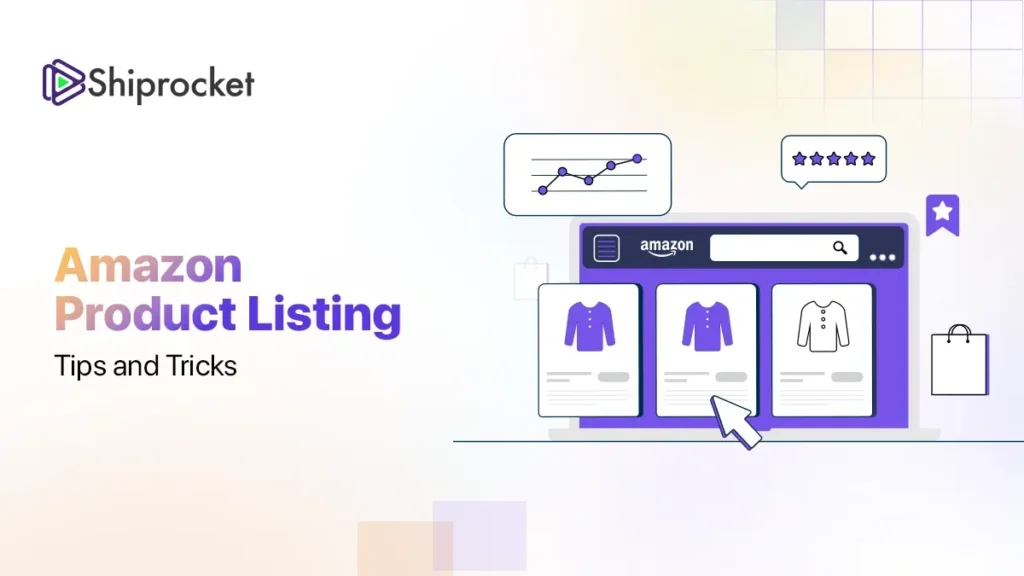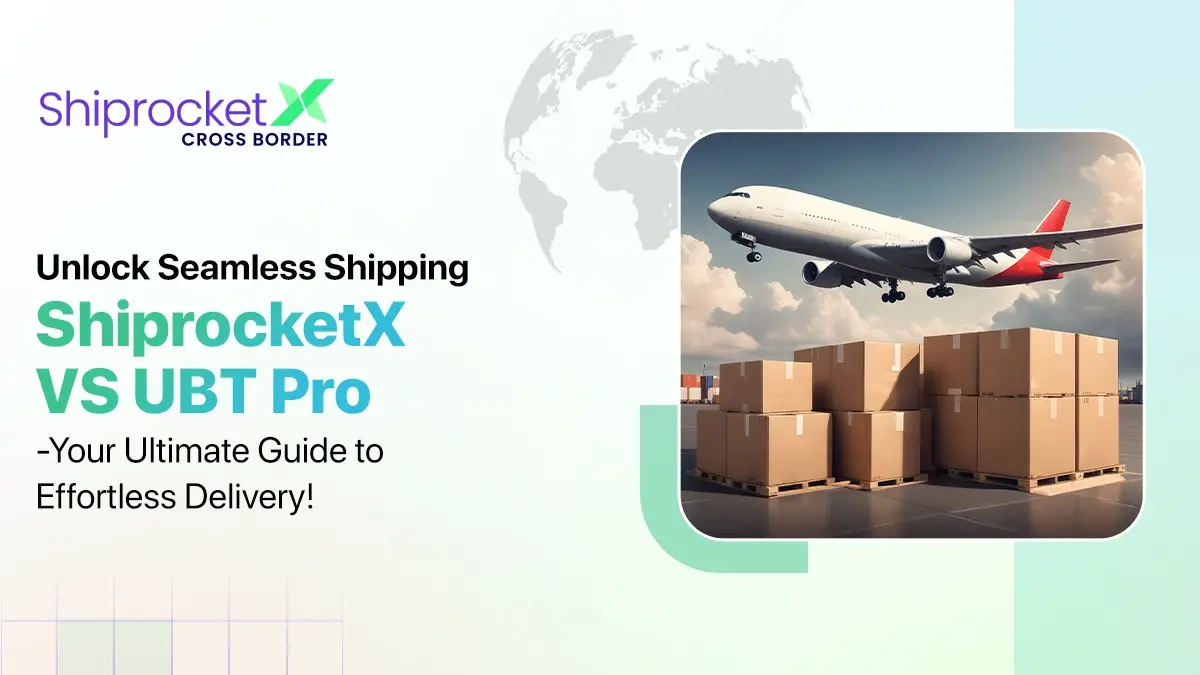Amazon Product Listing: Write, Optimise & Sell More
- Amazon Product Listings: Explanation
- Functions of an Amazon Product Listing
- Key Components of an Amazon Product Listing
- Step-by-Step Guide to Listing Products on Amazon.in
- How to List Products on Amazon for Existing ASINs?
- The Importance of Product Reviews and Ratings on Amazon
- Tips to Optimise Your Amazon Product Listing for Enhanced Visibility
- Alternative Listing Options on Amazon
- Conclusion
Do you want to tap into a massive customer base for your products? You can’t overlook Amazon.
Most customers feel secure buying products from Amazon, which means they will likely take a chance on your product. Moreover, optimising your product listing on this largest retail platform also boosts your visibility on Google.
This article takes you through the compelling ways to create exceptional product listings on Amazon.

Amazon Product Listings: Explanation
Amazon product listings provide detailed information about the products you sell on Amazon. This listing comprises crucial information your customers should know before buying your product, including its name, images, description, utility, and price.
Amazon’s product listing is the ticket to reaching more customers. In fact, it’s the best way to scale your business.
However, if you want to maximise the potential of your listed products on Amazon, you must know some crucial components and best practices.
Functions of an Amazon Product Listing
There are various functions of Amazon product listing. But the major ones include:
- Getting more eyes on your products on Amazon.
- Encouraging shoppers to buy your product.
Key Components of an Amazon Product Listing
Here are some critical components of Amazon product listing:
1. Product Title
This is the first thing your customers see. Make sure it is well-crafted, concise, and relevant.
An ideal product title should be less than 80 characters.
Note: Amazon never recommends using ALL CAPS, so always avoid it in the product title.
Another important aspect to consider while writing your product title is infusing the primary keyword as close to the start of the title as possible. This practice will optimise it for Amazon searchability. Avoid keyword stuffing and ensure the keywords are placed organically in the product title. Remember, the more natural it looks, the better value it provides to your users.
Depending on the product category, your product title should include the brand name, product name, model number, colour, etc.
2. Product Images
You might have heard- ‘A picture is worth a thousand words.’ The same goes for Amazon’s product listing.
You should have at least 5 images of the product, which demonstrate its size and scale, highlight key features and uses, and show the product from multiple angles, including its packaging.
Furthermore, make sure you upload high-resolution images.
3. Key Features and Benefits
This section should include all secondary keywords to optimise your listing. Remember, this section is more important than the product description because of its position on the page (close to the price and Add to Cart button).
Pro tip: Showcase your product’s best features while keeping them clear and concise, benefit-focused, and unique to your product.
4. Product Description
The product description should completely describe your product and include the keywords organically. It tells your prospects all the information they need to know before buying your product, such as:
- Expanding on the features mentioned in the bullet points.
- Including any relevant warranties or guarantees.
- Addressing your prospect’s questions and concerns.
5. Pricing
Pricing is not about numbers, it’s a strategy. You should know how to price your product so that it wins the ‘Buy Box’ button, which will increase your sales tremendously. However, you may only get the Buy Box if you set a competitive price for your product.
Step-by-Step Guide to Listing Products on Amazon.in
You can reach millions of customers by listing your products on Amazon. Here is the step-by-step process for the same:
Step 1- Create a New Listing on the ‘Amazon Seller App’
The first thing to do is register yourself on Amazon Seller App. Once you have created your seller account, you need to create a new listing on this platform by going to ‘Catalog’ and then ‘Add Products.’
On the ‘Add Product’ page, you will get two options-
- I’m adding a product not sold on Amazon
- I’m uploading a file to add multiple products” option
If you are listing a new product, select the first option. However, for bulk listing, choose the second one.
Step 2- Choose a Relevant Category
After creating the new listing, Amazon Central App will ask you to pick a category and subcategories from the inventory drop-down menu.
You can find out your product category with SellerApp Chrome Extension if you are unsure of it. You need to enter the seed keyword after analysing your target audience and your keywords’ search volume and competition. Then, you can see the categories with similar products in the ‘Product Analyzer’ tool.
Step 3- Fill in the Product Information
Fill in all the details of the product you want to sell. These tabs include:
- Product Identity: You need to enter your product’s variations based on size, colour, etc. Next, you need to enter your product name and your primary keyword, based on which Amazon will automatically generate canonical URLs.
- Brand: Now, enter your brand’s name. If your brand is not registered on Amazon, it may ask you to provide some proof. To provide evidence, you can submit images of your product with its packaging mentioning your brand name.
Pro tip: Register your brand on Amazon to dominate Amazon search results and make your product/brand more credible.
- Product ID: You must provide a unique product ID— UPC (Universal Product Codes), EAN (European Article Numbers), etc. These IDs ensure product recognition. You can get these codes from the GS1 portal.
- Vital Info: Vital Info is a broad tab that requires you to include all the essential information about the product, including:
- Product description- Tell your audience insightful information about your product.
- Bullet points- Highlight the product’s key features and why customers should buy it.
- Item type name- Model number, model name, and manufacturer.
- Fill Up the Offer Details: To fill up the offer details, you need to provide the following information:
- Quantity- The number of items you want to list on Amazon for sale.
- Condition- Determine the condition of your product- new, used, or refurbished.
- Fulfillment channel- Choose whether you want to be listed as an Amazon FBA (Fulfilled by Amazon) or FBM (Fulfilled by Merchant) seller. In the former option, Amazon takes care of all the shipping and customer services, while the latter lets you (the seller) handle all these services.
- Variations: You need to fill in this section only if you are selling different variations of your product in terms of sizes, colours, materials, etc.
- Images: Add high-quality images of your product by ensuring the dimensions of 500 x 500 or 1000 x 1000 pixels. Also, ensure you add multiple images of your product that show its utility from every angle and highlight different features.
- Add Keywords: In the keywords tab, you need to fill up these two fields-
- Target audience- Enter who you are targeting in this field after analysing your target audience
- Subject keywords- These are also called backend keywords. The primary objective of these keywords is to improve the discoverability of your product listing on Amazon, increase its visibility, and drive more eyeballs
Step 4- Set the Pricing
The next step is to set the pricing according to the quantity of products. For example, if you set the pricing at Rs. 200 for 4 products, each product’s value will be Rs. 50.
Step 5- Review, Save, and Publish
Once this is done, review all the details and launch your on Amazon. Congratulations, you have officially become a seller on Amazon after completing these steps.
Note: You can also list your product on Amazon by Adding a Product by Scanning or Listing from the Product Page.
How to List Products on Amazon for Existing ASINs?
Adding your product to an existing Amazon listing is easy. This is how you do it:
- Step 1- Visit the ‘Add Products’ page on the Seller Central app. Search for the product you find suitable for listing on the platform by its name, UPC, EAN, ISBN (International Standard Book Number), or ASIN (Amazon Standard Identification Number) number.
- Step 2- Select your product’s condition, whether it’s refurbished, new, or used.
- Step 3- To list your product, select the option ‘Sell the Product.’
- Step 4- Enter the selling price, choose the fulfillment method, and click ‘Save and complete’ to list your product on Amazon.
The Importance of Product Reviews and Ratings on Amazon
Product reviews and ratings on Amazon cannot be overlooked. They are crucial in building trust and improving credibility among your target audience.
Here are some reasons that will validate the importance of Amazon product reviews and ratings:
- Influence Buying Decisions: Your product’s ratings and reviews directly impact consumer behaviour by providing a digital version of word-of-mouth recommendations. These reviews build your customers’ trust and encourage them to buy the product.
- Impact Product Sales: Products with 5-star ratings positively impact product sales and perform better than the ones with low ratings. Remember, a single negative review can make you loose many clients. Another way it impacts product sales is that products with high ratings rank higher in Amazon search results, which consequently increases the sales potential.
- Build a Loyal Customer Base: Positive reviews are a powerful, cost-free marketing tool for sellers. They help them build relationships with customers and stand out in Amazon’s crowded marketplace.
- Feedback for Improvement: Your customer reviews play a vital role in gaining detailed insights into what works well and what needs improvement. This way, you can refine your products as per your customers’ reviews.
Tips to Optimise Your Amazon Product Listing for Enhanced Visibility
Consider implementing the following strategies to enhance your Amazon product listing:
1. High-Resolution Images
Make sure every Amazon listing clearly depicts the product from every angle in high-resolution images. This will not only attract customers but also satisfy Amazon’s product ranking algorithm (A9) and show your product at the top of the platform’s search results.
You must also use all image slots available on your listing by inserting primary and secondary images to demonstrate the product.
Some key considerations while adding product images on Amazon are:
- Use a pure white background.
- Show the entire product, but avoid what is not included in the listing.
- The product should cover 80% space of the image.
- The image should have a good resolution, allowing the customer to zoom in.
2. Optimise Product Titles
Keep optimised product titles that appear at the top of the Amazon search results. You can do this by using Amazon’s search bar to see popular search terms related to your product. Incorporating these keywords in your product title will make it more optimised and search-friendly.
Here are some tips for finding keywords for your product title:
- Use only relevant words related to your product.
- Avoid using jargon or terms that are less likely to be used by your prospects.
3. Optimise Your Product Descriptions and Bullet Points
The product descriptions section tells your customers the story about your product. However, make sure to use high search-volume keywords in the descriptions to increase the product’s ranking in the Amazon search results.
At the same time, the key ferrets and benefits section must include the necessary keywords and no jargon.
For product descriptions:
- Use keywords while showcasing the features and utility of your product.
- The content should be reader-friendly.
- Avoid fluff.
- Use HTML formatting (for example- <br> which will create paragraphs) to make your listing accessible and easy to read.
For bullet points:
- Reinforce keywords used in the title and introduce new ones.
- Write separate points on one line with a semicolon to make your content skimmable.
- Write about how your customers will benefit from that product instead of just mentioning its features.
4. Encourage Customer Reviews
How about seeking genuine reviews from customers who have used your product? Yes, this strategy can help you build trust and loyalty among your existing and potential customers.
Doing this will also increase customer interactions with your amazon product page and enhance your visibility in the Amazon search results.
5. Drive External Traffic
Promote your goods through social media channels like Facebook, Instagram, or Twitter. You can insert your Amazon product’s link to your posts, articles, or comments on social media. This will redirect users from those platforms and increase the traffic to your Amazon listings.
Simultaneously, you can use newsletters to inform subscribers about new products and promotions and direct them to your Amazon listings.
Some other factors to consider when listing your products on Amazon include:
- CTR (Click-Through-Rate): CTR shows how often customers click on your product after seeing it. If you meet their search intent and provide what they’re looking for, your CTR will naturally improve, helping Amazon rank your product higher.
- CTS (Click To Sales): Click to Sales measures the percentage of website visitors who purchase after clicking on the link. CTS is prioritised more than CTR. It means even if your product has a lower CTR than your competitors but sits on higher CTS, your product will rank higher in the Amazon search results.
- Content: Amazon’s A9 algorithm determines the quality of your content and considers your keyword’s density, relevance, and text ratio to rank your product.
- Reviews: Good reviews will increase the ranking and visibility of your product on Amazon.
Alternative Listing Options on Amazon
Amazon provides several options to list different types of products. Here are some alternating listing options on Amazon:
1. Variation Listings
Variation listings allow sellers to list groups of similar products that only differ based on size, colour, number of items, and material under a single parent listing. Using the variation listings, sellers can improve the visibility of their products and capture a broader audience.
This also enables sellers to enhance customer experience by allowing them to select their product attributes without leaving the main product page.
You need to fill in the following details to create variation listings on Amazon:
- Product ID
- Offering condition
- Price
- Quantity
2. Bulk Uploads
As adding all the products separately may take a lot of time, Amazon supports multiple product listings with its bulk listing feature. It is an efficient way of adding multiple products on Amazon without entering details one by one.
For bulk uploads on Amazon, follow these steps:
- Step 1- Go to the ‘Add Product’ page in Seller Central and select the option ‘I’m uploading a file to add multiple products.’
- Step 2- Based on your requirements, download the Excel template for the following situations:
- List products not currently in Amazon’s catalogue
- List products already in Amazon’s catalogue
- Mention product details
- Fill-in price & quantity
- Step 3- Choose the product category and create a template.
- Step 4- After downloading the product template, fill in all the details and upload the spreadsheet to the Seller Central Dashboard.
- Step 5- Navigate to the ‘Spreadsheet Upload Status’ tab and check the upload status of your product on Amazon.
3. Featured Offer
Getting a Featured Offer listing on Amazon is a privilege. This option features a white box on the right side of your product page where customers can add products for purchase.
Your competitors may compete for the Featured Offer, but only sellers who meet certain performance metrics and use services like Fulfillment by Amazon (FBA) are eligible for this option.
Conclusion
With eCommerce platforms like Amazon, growing your business is easier than ever. However, cash-on-delivery fulfillment poses challenges, as sellers are not always obligated to accept returns. With Shiprocket, you can fulfill all orders via prepaid or COD options.
By choosing Shiprocket, you can be assured that all your deliveries will be done safely, and the money will be collected from the end customers without any hassle.
Sign up for free today to streamline your eCommerce shipping.







